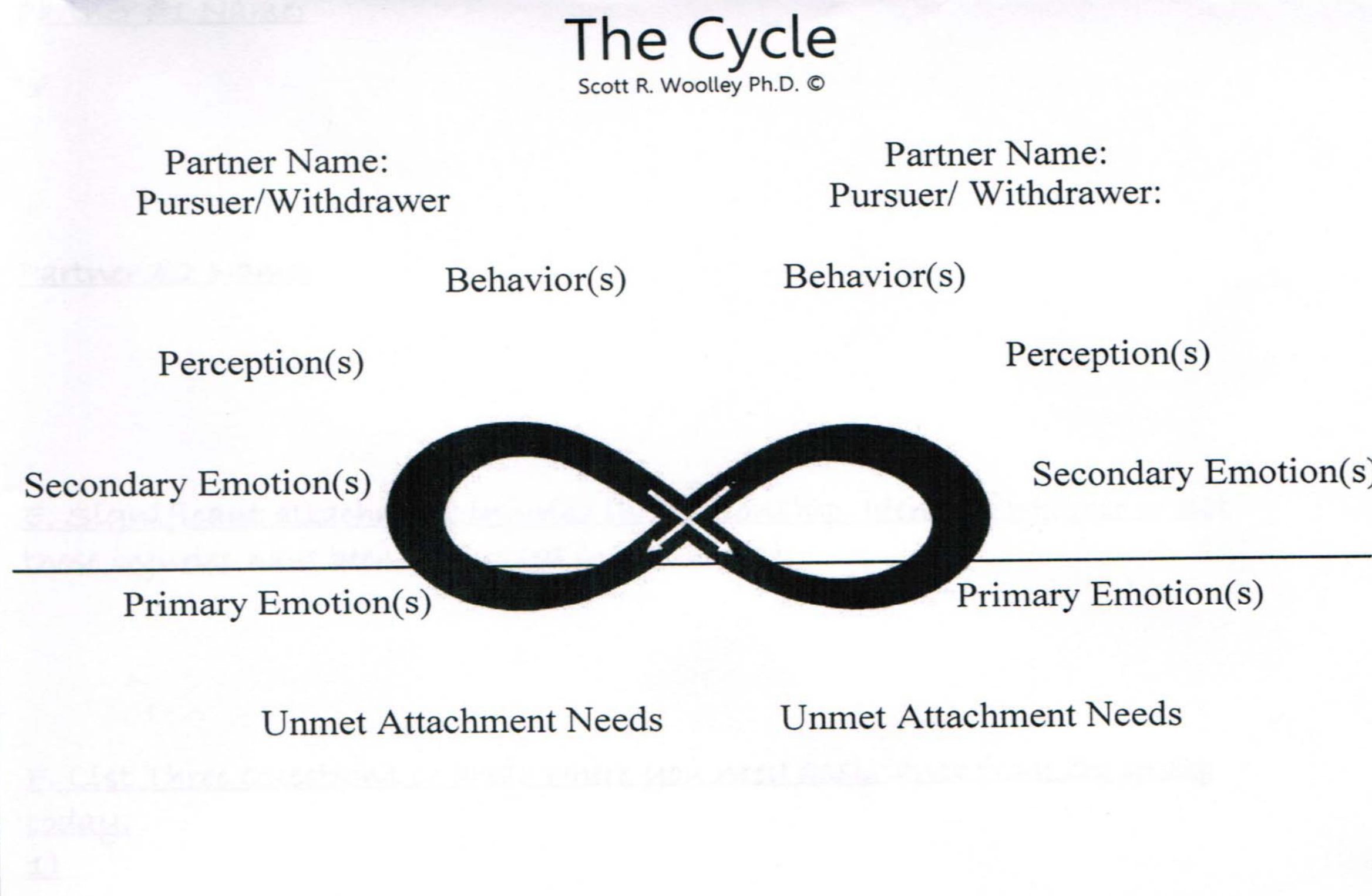The Relationship Dance
Now that you’ve joined us for an introduction on systems theory and an overview of the different kinds of both secure and insecure attachment (and if you missed those you can feel free to check out our previous posts here , here, here, here and here) I would like to present to you another layer of the way that the interaction of attachment and systems impact our lives in relationships. Afterall, I am a marriage and family therapist; I am focused on the system and the relationship 😊.
The overarching name for this interaction of attachment and the system is known as our interactional cycle. If you read the previous posts on insecure attachment and the ways in which they can manifest in adult behaviors, then this part may make sense to you but you may be wondering how the system comes into play. Let me elucidate, systems and causality are both circular so “no one behavior simply causes another; rather each is linked in a circular chain to others behaviors” (Johnson 2004). This combination with attachment basically says that our attachment shapes our worldview and how we view security, taken together with the circularity of systems, each of our attachment-tinged responses feed off the responses of the other.
Let’s make this clearer. Let’s take the example of a couple where the wife has an anxious-preoccupied attachment style and the husband has a dismissive-avoidant attachment style. There is an argument where the husband throws out the statement “I just can’t live like this!”, the wife, responding from her anxious-preoccupied lens perceives rejection and a pulling away from the relationship. She then doubles down on ensuring physical closeness and a pleading of “don’t leave me”. This strong show of emotion freaks out the dismissive-avoidant attached husband and he may walk into another room and shut the door, making distance between himself and his wife. The wife then attempts to open the door to maintain the proximity. Each is responding to the other’s show of attachment. This is known as the “attachment dance” (Johnson 2004).
To be even clearer, in the dance described above, the wife can be described as a pursuer and, the husband, a withdrawer. This is not the only interactional cycle, but it is one of the more common combinations. It is also possible to have a pursuer/pursuer or a distancer/distancer interactional cycle. A pursuer/pursuer interaction may look like a couple who are both upset, escalate the argument higher and higher and then cling to one another promising to never fight again. A distancer/distancer interaction may look like an argument that flares up wherein both partners then withdraw (they may go to their separate spaces or simply give one another the silent treatment) for a period of time, and then slowly get back to “normal” while never addressing the situation again. The good news is that this can be changed and shifted to work for you rather than against you! You best bet is to seek out a couples therapist that does Emotionally Focused Couples Therapy. If you’re in the NYC area, give me a call! I would be happy to help you and your partner renegotiate your interactional cycle and help the responses you give one another take on new meaning!
